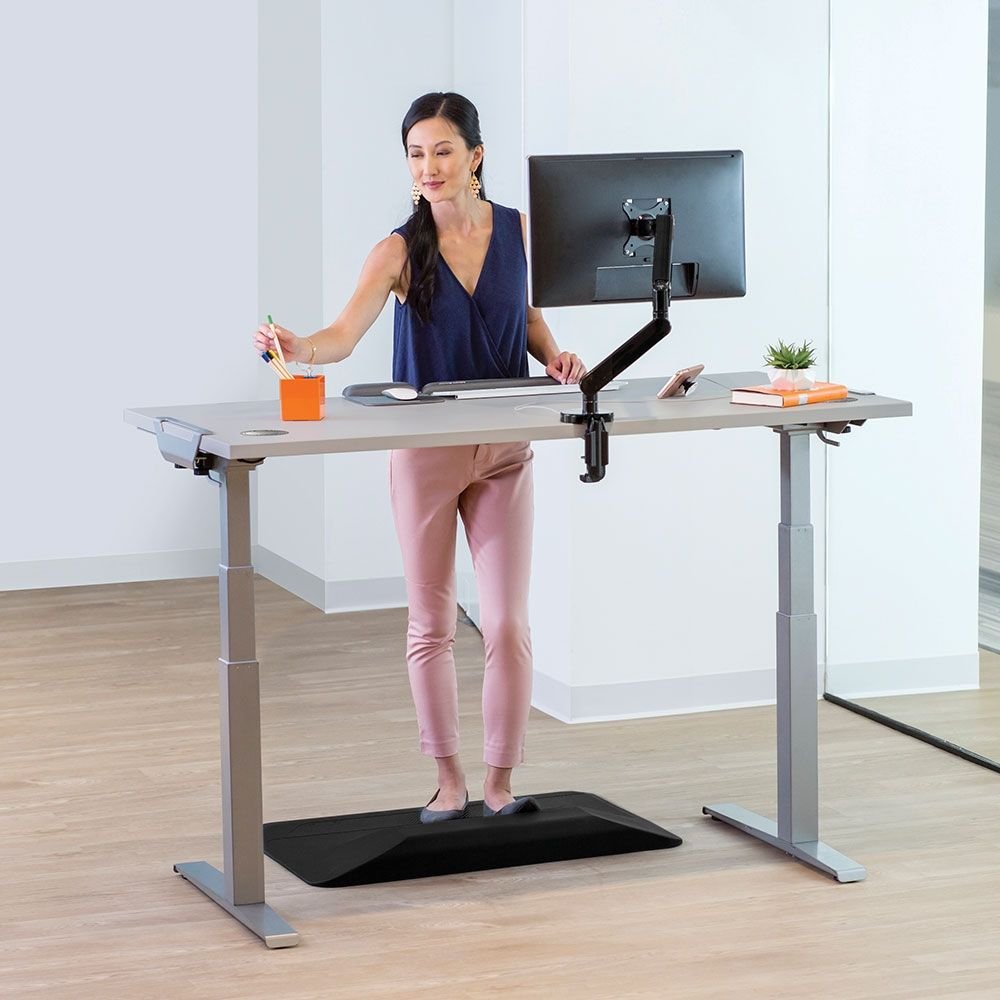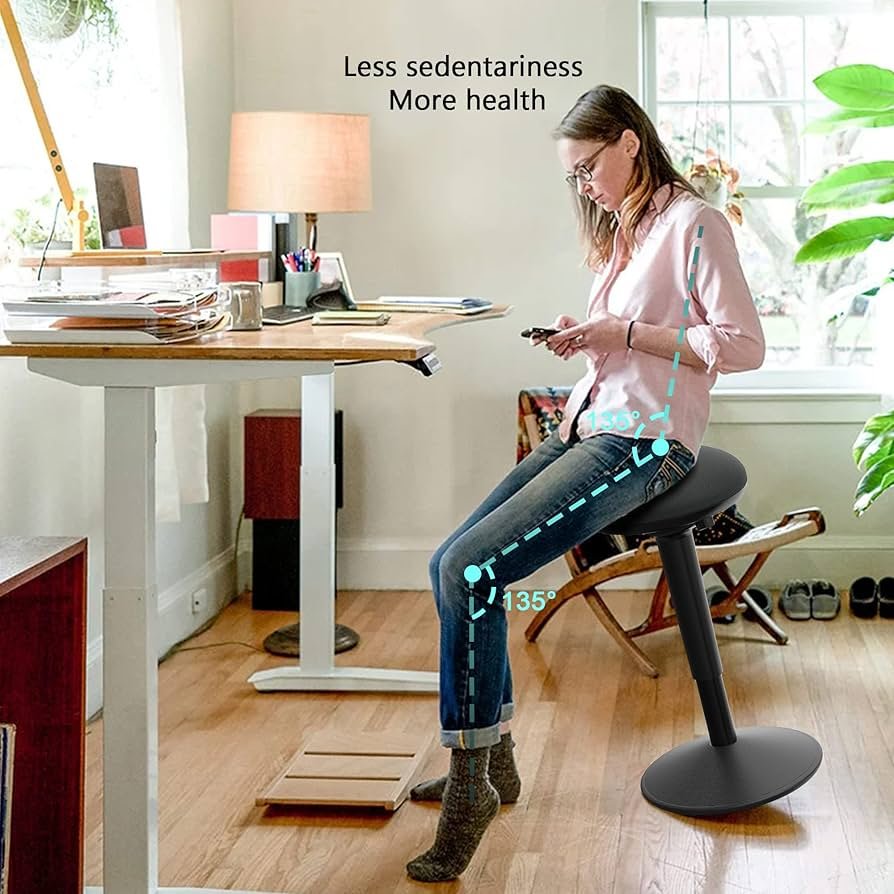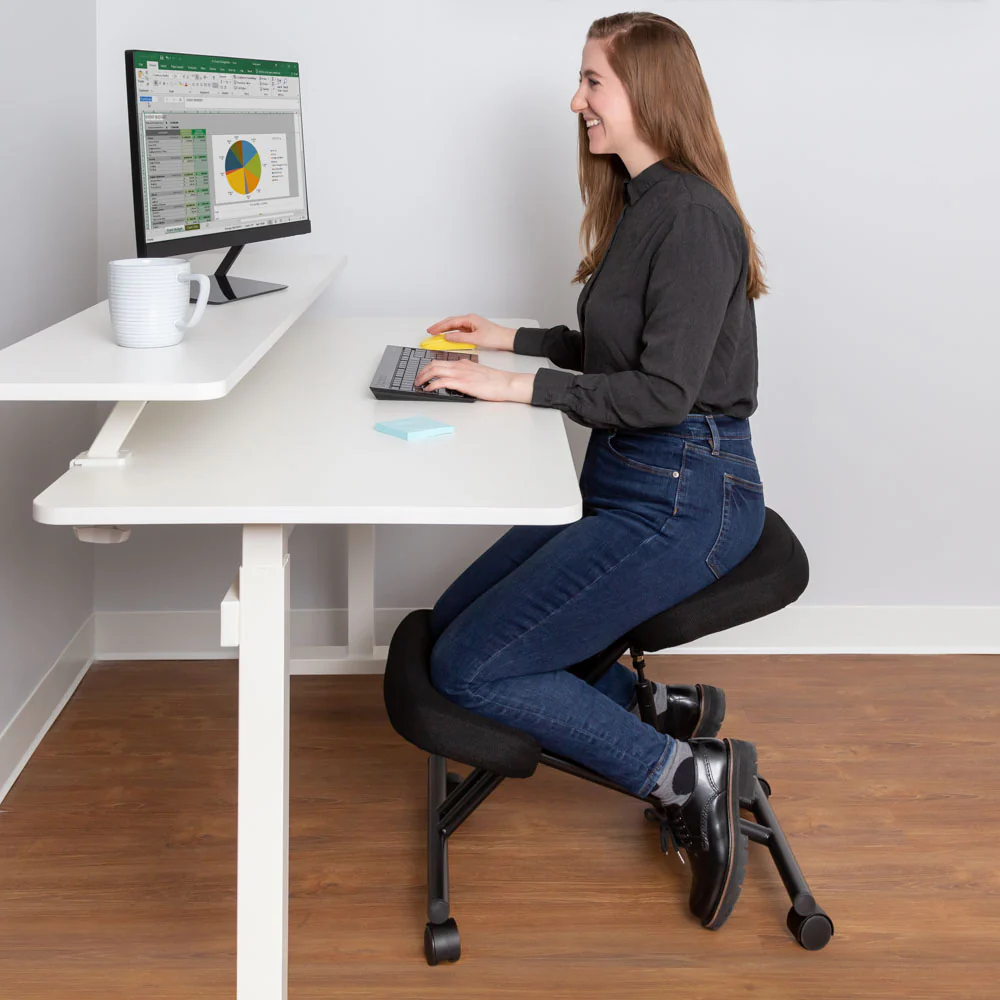The modern workplace is undergoing a significant transformation, challenging long-held notions about office ergonomics and employee wellness. Among the most prominent changes is the adoption of standing desks, which have seen a surge in popularity over the past decade. This trend is partly driven by increasing awareness of the negative health implications associated with prolonged sedentary behavior.
Concurrently, health experts and fitness enthusiasts alike champion the benefits of incorporating more physical activity into daily routines, particularly through regular walking.
Standing desks are lauded for their potential to reduce the risks associated with sitting for long periods, such as cardiovascular disease, obesity, and type 2 diabetes. Proponents argue that standing while working can enhance posture, increase energy levels, and potentially boost productivity.
On the other hand, advocates for regular walking emphasize the importance of movement for cardiovascular health and mental well-being. Walking breaks are seen not just as a means of preventing the ailments linked to inactivity, but also as opportunities for mental rejuvenation and creativity.
This blog aims to delve into the heart of this debate, exploring the comparative advantages and potential drawbacks of standing desks versus walking. By examining various aspects such as health benefits, impact on productivity, and overall contribution to well-being, we seek to provide a balanced perspective on whether standing at your desk or incorporating more walking into your day offers a superior approach to modern work-life balance.
The Health Benefits of Using a Standing Desk
Recently, standing desks have gained popularity as a potential solution to the health issues associated with prolonged sitting. One of the primary benefits highlighted by health professionals is the improvement in posture. When used correctly, a standing desk encourages proper spinal alignment, thereby reducing the risk of chronic back pain and other musculoskeletal problems.
This is crucial for individuals who spend considerable amounts of time at their desks, as maintaining good posture can prevent the development of severe long-term health issues.
Moreover, standing desks can play a pivotal role in reducing the risk of cardiovascular diseases. Research has shown that prolonged sitting is linked to a number of cardiovascular issues, including an increased likelihood of heart disease. Standing, on the other hand, promotes better circulation and blood flow, which are essential for maintaining a healthy heart.
A study published in the European Heart Journal found that individuals who stood for a greater portion of the day had a lower risk of heart problems compared to those who sat for extended periods.
The use of standing desks can also contribute to weight management. Sedentary lifestyles are often associated with weight gain and obesity. By simply standing more throughout the day, individuals can burn more calories compared to sitting.
A study conducted by the Mayo Clinic indicated that standing burns an additional 0.15 calories per minute compared to sitting. Over time, this can accumulate into a significant caloric deficit, aiding in weight management efforts.
Additionally, standing desks may enhance energy levels and cognitive function. Many users report feeling more alert and less fatigued when using a standing desk. This could be due to the increased movement and reduced likelihood of the lethargy often associated with prolonged sitting.
Enhanced focus and productivity have also been observed, likely stemming from the improved physical state and mental clarity experienced when standing.
Experts from the American Journal of Public Health similarly recommend the integration of standing desks as part of broader workplace wellness programs, promoting both physical and mental well-being. In summary, standing desks offer a range of health benefits, making them a valuable addition to modern workspaces looking to improve employee health and productivity.
Potential Drawbacks of Standing Desks
While the adoption of standing desks has become a popular trend in workplaces aiming to boost health and productivity, it is essential to consider the potential drawbacks associated with their use. Prolonged standing can create several physical strains, which may outweigh the intended benefits over time.
Firstly, extended periods of standing can lead to leg pain and discomfort. Without sufficient breaks or appropriate footwear, individuals may experience swelling in the lower extremities. This can result in discomfort and may even lead to more serious conditions, such as chronic venous disorders.
Standing for long durations causes the veins in the legs to work harder to pump blood back to the heart, potentially resulting in varicose veins. These swollen and twisted veins can be both a cosmetic concern and a source of significant discomfort.
Moreover, the importance of proper ergonomics cannot be overstated when using a standing desk. An improperly adjusted desk can place undue strain on various parts of the body, including the back, neck, and shoulders.
Poor posture and incorrect desk height can exacerbate these issues, leading to muscle fatigue and possibly chronic pain. Users must pay close attention to the alignment and positioning of their computer screens, keyboards, and overall workspace to minimize these risks.
The transition to using a standing desk should be gradual and carefully planned. Sudden shifts from sitting all day to standing all day may impose undue stress on the body, leading to the potential development of new health problems.
Additionally, standing desks should ideally be used in combination with periods of sitting and movement to strike an optimal balance. Alternating between different postures and incorporating short walks or stretches can mitigate the adverse effects associated with both prolonged standing and prolonged sitting.
In conclusion, while standing desks offer clear advantages, it is crucial to be mindful of their potential downsides. Addressing these challenges through proper ergonomic setups and balanced activity can help maximize the benefits while minimizing risks.

Health Benefits of Walking Throughout the Day
The importance of integrating regular walking breaks into daily routines cannot be overstated. Walking, a fundamental human activity, offers numerous health benefits that include improved cardiovascular health, enhanced mental clarity, and the promotion of a natural movement pattern that aligns better with human physiology compared to prolonged sitting.
Walking impacts cardiovascular health significantly. According to studies, even moderate walking sessions can lead to lower blood pressure, improved circulation, and a reduced risk of heart disease. Physical activity elevates the heart rate, ensuring that the heart muscles remain strong and efficient. Moreover, consistent walking can aid in maintaining healthy cholesterol levels and managing body weight, both crucial factors in cardiovascular well-being.
Mental clarity is another substantial benefit of walking. As people walk, endorphins are released, which helps in reducing stress and anxiety levels. The rhythm and movement of walking can also serve as a meditative practice, allowing individuals to clear their minds and gain better focus. Research by health professionals indicates that regular walking breaks during work hours contribute to improved cognitive function and productivity.
Additionally, walking promotes a natural movement pattern that aligns more closely with human physiology than sedentary behavior. Evolutionarily, humans are designed to be on the move rather than seated for extended periods.
Regular walking helps to maintain joint flexibility, muscle tone, and bone density. Furthermore, it can help prevent conditions associated with a sedentary lifestyle, such as lower back pain and muscle stiffness.
Health professionals recommend integrating walking breaks into daily schedules. Even short, frequent walks can accumulate into substantial health benefits. Guidelines suggest aiming for at least 30 minutes of walking spread throughout the day to realize these advantages fully. By making walking a habitual part of daily life, individuals can significantly enhance their overall health and well-being.
Challenges of Incorporating Walking into a Daily Routine
Integrating walking breaks into a daily work routine presents several logistical challenges and potential impacts on productivity, especially in certain work environments. Employees in roles that require constant attention or those who must remain stationary for extended periods may find it particularly difficult to find suitable times for walking. Additionally, workspaces designed without consideration for mobility can pose further logistical issues.
Time constraints are a significant hurdle for many professionals. Regular walking breaks might seem impractical amidst a packed schedule filled with meetings, deadlines, and continuous tasks. The fear of losing productive time discourages employees from taking necessary breaks, despite the well-documented benefits of physical movement for mental clarity and overall health.
Adopting a structured approach to overcome these challenges can be effective. One method involves scheduling short, regular walking breaks throughout the workday. Time management strategies can be employed, where breaks are planned at specific intervals to ensure they do not interfere with critical work tasks. Developing a culture that prioritizes wellness can encourage more frequent adherence to these breaks without guilt or fear of lost productivity.
Leveraging technology can also facilitate regular movement. Setting reminders or alarms serves as an effective method to ensure breaks are not overlooked. Various applications and wearable devices can prompt individuals to stand up, stretch, or take a short walk, integrating physical activity seamlessly into their daily schedule.
Providing designated areas for walking within the workplace can also help. Creating walking paths, or encouraging short strolls around the office every few hours, ensures that employees can make the most of these breaks without needing to leave the premises, thus optimizing their time.
Although walking during a busy workday may seem challenging, implementing structured and technological solutions can mitigate these disruptions. Emphasizing the importance of health and wellness ensures productive integration of walking breaks, balancing daily responsibilities with physical activity.
Productivity Implications: Standing vs. Walking
When considering the implications of standing versus walking on productivity, both methods offer unique advantages. Standing desks have gained traction in recent years, primarily due to their ability to enhance focus and energy levels during work hours. Research indicates that workers who use standing desks can experience reduced fatigue and higher levels of alertness, which can translate into improved work performance.
On the other hand, incorporating walking breaks into the workday presents another viable strategy for boosting productivity. Walking can stimulate circulation and reduce the risk of musculoskeletal issues, thereby helping maintain physical health. Moreover, regular walking breaks have been shown to increase creativity and problem-solving capabilities, as stepping away from the desk allows the brain to recharge and generate new ideas.
Many companies have embraced both standing desks and scheduled walking breaks to optimize employee productivity. Anecdotal evidence from workplaces like Google and Apple reveals that employees using standing desks report higher engagement levels and fewer health complaints. Similarly, organizations that encourage walking meetings or lunchtime walks observe enhanced collaborative efforts and overall job satisfaction among their staff.
Case studies further illustrate the benefits of these approaches. For example, a study conducted by the Texas A&M Health Science Center indicated that call center employees using standing desks saw a 46% increase in productivity over a six-month period. Alternately, a report from Stanford University showed that participants who took regular walking breaks performed better on creative thinking tasks compared to those who remained seated.
In conclusion, both standing desks and walking breaks offer valuable benefits for enhancing productivity. Whether standing to improve focus and energy or walking to boost creativity and physical health, integrating these approaches into the workday can contribute to a more dynamic and efficient work environment.
Hybrid Approach: Combining Standing Desks with Walking
The debate between utilizing standing desks and the benefits of regular walking can lead to a natural synergy when both strategies are integrated. Adopting a hybrid approach that combines the use of standing desks with regular walking breaks can maximize the health and productivity benefits each method offers.
One effective strategy to integrate both practices is alternating between sitting and standing throughout the workday. Transitioning between different postures reduces the strain that predominantly standing or sitting can place on the body.
For instance, individuals might start their day seated, stand during mid-morning tasks, and return to sit in after lunch, promoting physical variances to avoid fatigue or musculoskeletal discomfort. The key is to listen to one’s body cues and transition postures accordingly.
Furthermore, setting specific times for walking breaks is another practical tip. Short walks can be scheduled during natural work intervals, such as after completing a significant task or during designated break times.
Incorporating brief walks, even if it’s just around the office or a quick loop outside, can help maintain circulation, reduce stress, and boost overall mental clarity. Utilizing tools such as reminders or using apps that prompt movement can keep individuals consistent with their walking routine.
This balanced approach emphasizes the adoption of a routine where movement is a priority. It can help mitigate the negative aspects associated with prolonged sedentary behavior or prolonged standing. The integration of both strategies encourages a more dynamic work environment and promotes sustained energy levels throughout the day.
It’s vital to create an environment that supports regular movement, which can include a combination of ergonomic furniture, standing desks, and comfortable walking spaces.
By seamlessly blending standing desks with regular walking breaks, individuals can harness the benefits of both practices. This approach not only contributes to physical well-being but also enhances productivity, ultimately fostering a healthier and more efficient workday.
Conclusion: Making an Informed Choice
Throughout this blog post, we have evaluated the benefits and drawbacks of both standing desks and walking as strategies to enhance health and productivity. Each option offers unique advantages and potential limitations, making it crucial for individuals to assess their specific circumstances before making a decision.
Standing desks have garnered popularity for promoting better posture, reducing sedentary behavior, and potentially alleviating back pain. They provide a feasible solution for individuals looking to integrate more movement into their work day without disrupting their workflow. However, it is important to acknowledge that prolonged standing may cause discomfort or fatigue, which can be mitigated by alternating between sitting and standing throughout the day.
Walking, on the other hand, is an excellent way to increase overall physical activity. Regular walking breaks can lead to improved cardiovascular health, enhanced mood, and greater creativity during work tasks. Nevertheless, it might pose logistical challenges for those with time constraints or limited opportunities to walk during the workday. Furthermore, not all work environments are conducive to frequent walking breaks.
Considering these points, the optimal choice largely depends on personal preferences, work requirements, and individual health conditions. Some may benefit from a combination of both standing and walking to strike a balance that suits their needs. For example, using a standing desk for certain tasks and incorporating short walking breaks can promote physical activity without significantly disrupting workflow.
In making an informed choice, it is essential to evaluate your work habits and explore how different strategies may impact your health and productivity. Consult with healthcare professionals if necessary to tailor a plan that suits your specific needs. Ultimately, the goal is to find a sustainable and effective approach to improve overall well-being while accommodating the demands of a modern work environment.










